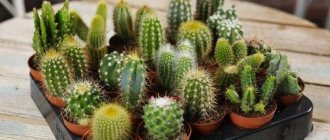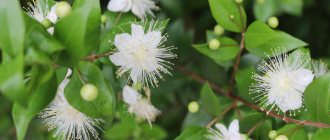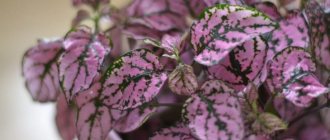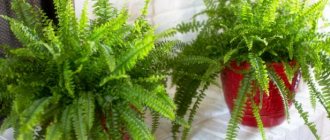/Accessories and decor/Gardening/
Planting a tree and caring for it is a dream that can be fulfilled right now and right in your apartment. Beware: after this article, you are very likely to fall in love with an evergreen tree with a euphonious name and a trail of beautiful stories and traditions!
- The myrtle tree is a small staunch fighter for air purity and the destruction of microbes, an assistant in the treatment of viral diseases. In addition, the plant looks very aesthetically pleasing: a green crown and lush buds during the flowering period.
There are many types of myrtle, varying in leaf size, shape and color. However, at home, the most commonly grown myrtle (Myrtus communis)
And here is a photo of an indoor myrtle in bloom.
View this post on Instagram
Handsome Myrtle in bloom) #myrtle #flowers #flowerinpot #flowerbloomingonthewindow #flowersinthehouse
Posted by Mila Mitina (@mila.mitina.73) Jun 10, 2022 at 11:21 PDT
Contrary to popular belief, myrtle is quite unpretentious: it loves good diffused lighting, timely watering as the soil dries out, spraying in warm periods and fresh air. In order for the tree to have a neat ball shape (such trees are also called topiaries), it needs annual pruning. Further in the article you will find everything about caring for myrtle at home, interesting information about the history of the plant, as well as a photo gallery of myrtle topiary in the interior.
Lighting
The plant will feel great on a western or eastern window: myrtle likes bright light, but not direct rays. If the myrtle tree will be flooded with very intense light from the south side or stand on a south balcony, you will need to slightly shade the bush (especially in the midday sun). On the north side the tree will not bloom well.
Useful and medicinal properties of the houseplant myrtle
The types and varieties of myrtle trees are varied, but they all have amazing beneficial properties. Having such a plant at home is very important - the leaves and flowers contain many essential oils. First of all, the myrtle tree is a natural antibiotic, its properties are similar to these medications. Of course, with its additions, myrtle does not provoke a change in the bacterial balance of the digestive system (dysbacteriosis) and does not take any time at all for the body. Even the aroma of a plant is destructive for many microbes; the mere presence of this plant in a room kills 4/5 of the microbes floating in the air. The properties of myrtle allow it to be used as a remedy against herpes, prostatitis, cystitis, tonsillitis, sinusitis, asthma, bronchitis and other dangerous diseases.
Watering
The main indicator for watering myrtle is drying out of the soil. As soon as the layer begins to dry out a little, water the tree with settled water.
- In summer, the approximate schedule for watering and spraying is once every 2-3 days, in winter - less often.
If you make a mistake and forget about watering the myrtle for a very long time, as an emergency measure, you can immerse it along with the soil in water, and then let the rest drain onto a tray.
See also:
- Caring for indoor hydrangea at home
- How to care for money tree (crassula) at home
- How to care for hibiscus (indoor Chinese rose) at home
- How to care for begonia at home
- How to care for Schefflera at home
- Anthurium - home care guide
- How to care for dracaena at home
- Caring for Zamioculcas (dollar tree) at home
- How to care for Kalanchoe at home
- Tree in the room: how to care for Ficus Benjamin at home
- How to care for geraniums at home - a guide for beginners
- How to care for orchids - 7 steps for a beginner
- How to care for violets at home
Short description
In the wild, the myrtle tree grows in the Mediterranean and is found in Italy, France, and Spain. It prefers a warm, mild climate with short winters, so in Russia it is most often cultivated as a houseplant.
Myrtle tree is a great option for growing at home
A representative of the Myrtaceae family can be a shrub or a low tree. The height of the trunk is up to 0.7 meters, but in the natural environment it grows up to 5 meters.
Features of myrtle:
- Evergreen species.
- The leaves are rich green, with tiny veins. Rich in essential oils, therefore they emit a stunning aroma.
- The flowers are small and white. Collected in inflorescences or solitary.
- The round fruits of myrtle are a deep blue hue. The seeds inside can be used for propagation.
Note! At home, you can grow myrtle as a bonsai, but you will have to do regular pruning.
You can grow myrtle at home on the windowsill; this does not require specific knowledge.
Popular varieties and types
There are more than 30 varieties of myrtle in nature, many of them have good decorative properties and are grown in greenhouses and greenhouses. But some are suitable for a flower garden in the house.
The simplest is considered to be the common myrtle, attractive, but undemanding to care. You can also plant the following varieties in your apartment:
- Cassandra (marsh variety of myrtle), height up to a meter. Suitable for responsible gardeners without children or pets, as it is poisonous.
- Hymen. Considered the patron saint of newlyweds.
- Communis. Decorative variety with snow-white fragrant flowers.
- Variegated. A beautiful elegant plant with brightly colored leaves.
- Citric. It has a subtle unobtrusive citrus aroma.
- Alhambra. Tiny white flowers bloom in spring.
- Large-leaved. Known for its ability to destroy bacteria. Purifies the air, the leaves of this myrtle are used as raw materials in alternative medicine.
Any of these varieties of southern plants can be grown independently.
Note! Despite its benefits, myrtle foliage can cause dizziness in some people because it contains a huge amount of essential oil.
Top dressing
In order for the plant to grow (especially if you want to grow a real large tree in a tub), you need to add fertilizing to the myrtle menu. As always, this is done in the spring and summer. Stick to a weekly fertilizer addition schedule. Thus, you will need to feed the tree 24 times during the warm season. There is no need to fertilize the soil in autumn and winter!
- The myrtle “diet” is completely satisfied with universal complex fertilizers for deciduous trees, which are available in any specialized stores.
Possible problems
Myrtle in natural conditions has few pests and rarely gets sick. In potted culture, greenhouses and winter gardens, despite the fact that this is an essential oil plant, it is bothered by:
- whitefly;
- mealybug;
- spider mite;
- thrips;
- aphids.
Diseases include black mold (sooty fungus) and various rots that can occur from excessive watering, especially in poorly drained substrates.
Most problems can be dealt with by placing the tree in the bathroom and treating it with laundry soap. But myrtle needs to be rinsed immediately, whereas most other plants need to sit for 15-30 minutes. If it stays in the soap suds for more than 5 minutes, the lye will simply burn the leaves and they will fall off. The same thing will happen if even a little soap remains on the plant.
Important!
Myrtle should also be rinsed after using chemical protection products.
Most other problems are related to planting and care errors:
- when the root collar is deepened, the myrtle will become very sick, wither, and if urgent measures are not taken, it will die;
- if the leaves curl or turn black, the tree should be moved away from the light source or sprayed more often;
- myrtle can shed its leaves in a draft, from overwatering or drying out of the substrate, or from an insufficiently sunny position; high temperature during the rest period, dry air;
- Lack of light leads to the development of long weak shoots on the tree, lack of flowering, and the appearance of too small pale leaves.
Sick tree
Trimming
A tree as round as a lollipop is not the original type of myrtle: this is how it is formed when pruned. If the bush is started, it will have a pyramidal crown shape with a thickened bottom.
An important point: the more often you prune, the less often the myrtle will bloom. So decide for yourself what will please the eye more: flowers or a green crown.
Pruning is done with pruning shears or garden shears. The best time of year for this procedure is spring.
- Watch the density of the plant: myrtle will not like pruning too often due to the weak trunk.
With rational pruning and the whole sum of favorable factors given in the article, myrtle can grow in a couple of years to the state of a beautiful lush tree, which can already be planted in a floor tub.
By the way, some plant growers go further and, using pruning, make dwarf bonsai varieties from myrtle. It turns out quite successfully! To do this, the trunk is pruned to achieve bushiness, and the plant itself is transplanted into a wide and flat pot, covering the soil with moss.
View this post on Instagram











